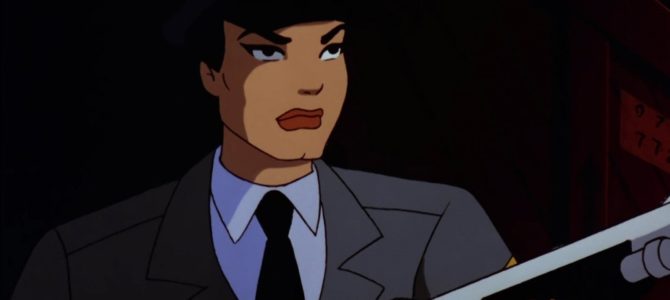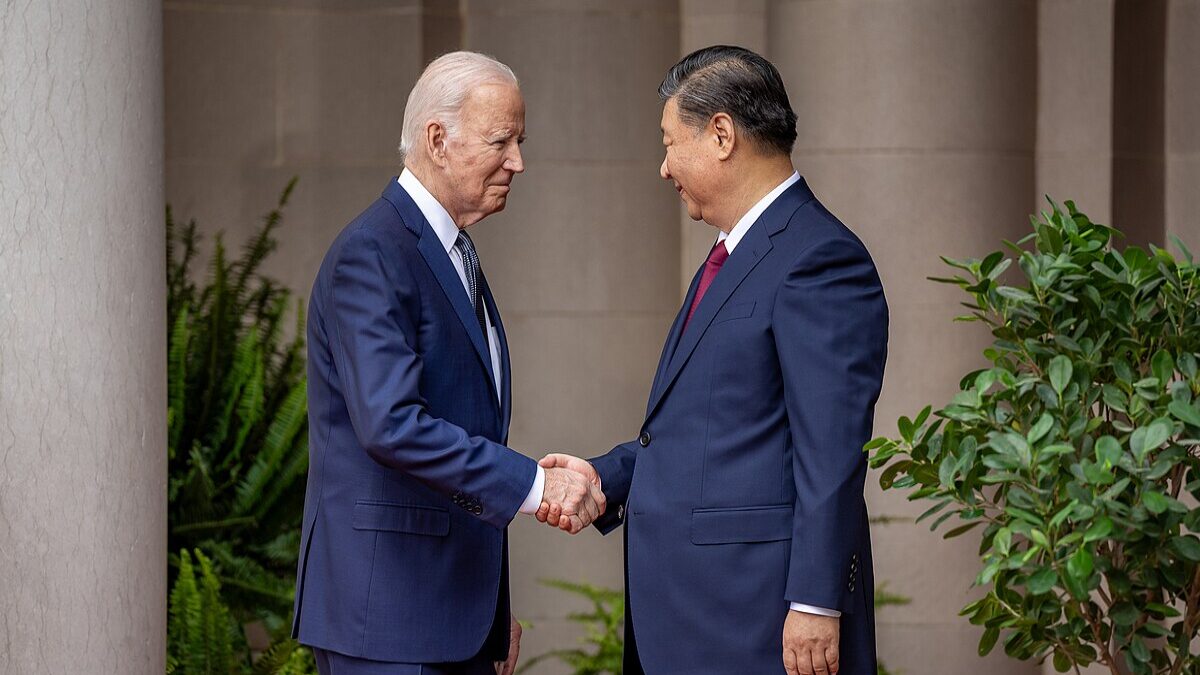
Spoilers ahead.
“P.O.V.” is an extraordinary episode involving organized crime, without a super-villain in sight. But that is only the most obvious way in which the episode is out of the ordinary, especially for an animated series.
“P.O.V.” surveys the Caped Crusader’s relationship to the Gotham City Police Department. In Christopher Nolan’s later film trilogy—or the “Year One” series of Batman comics—the GCPD is portrayed as corrupt. Here, as befitting a series targeted in the first instance at the young, Commissioner Gordon is shocked at the claim by Lt. Hackle (John Considine) of internal affairs that his officers might be “on the take” (lingo which may have been lost on those younger ears).
Three officers relate their roles in a failed bust to Hackle, with each bringing their own perspective in the style of Akira Kurosawa’s “Rashomon” (1950). It is a narrative device borrowed many times since, including in television, but fairly sophisticated for an animated series. There is the additional twist that Det. Harvey Bullock proves to be an unreliable narrator, even to his own subjective recollection.
The episode ultimately focuses on the forging of a relationship between Batman and Officer Renee Montoya, a character created for this series but only glimpsed earlier. She was recognized as a good idea by DC Comics, which managed to introduce her in the books months before this episode aired due to the longer production schedule for animation.
“P.O.V” opens (unknown to us at first) in a flashback. Officer Montoya and her partner, a rookie named Wilkes, are racing wildly to the scene of a supposed “sting.” She has the patrol car’s lights and siren activated, which seems inconsistent with participating in a sting, though it ultimately does not matter.
Montoya also assures Wilkes they will meet Bullock with time to spare. She is incorrect, as they arrive at a warehouse where a fire is raging. The officers find Bullock injured outside the building. They proceed toward the warehouse. Bullock spots Batman at the edge of the roof before losing consciousness.
This scene is the backdrop for Hackle’s internal investigation as he questions Bullock, Wilkes, and Montoya. Commissioner Gordon observes the interrogation.
Bullock falsely claims the other officers were late to the bust. He also claims he saw Batman enter the warehouse and feared the Dark Knight would alert the targets of the sting. In truth, Bullock’s ambition led him inside the warehouse without waiting for backup. He observed thieves cracking the warehouse safe, but clumsily makes a noise that warns them of his presence—which he also blames on Batman.
The gang attacks Bullock. During the fight (which often plays out in shadowy silhouettes, in the noir style re-popularized by “Raiders of the Lost Ark”), one of the goons strikes a fuse box with an axe, igniting a fire. Bullock is almost overcome with smoke inhalation before he is rescued by Batman and his trusty grappling gun. Bullock falsely testifies he rescued Batman.
Hackle rightly smells something fishy in Bullock’s tale. When Bullock again tries to deflect blame onto the uniformed officers, Wilkes objects. Hackle then asks Wilkes for his version of events.
Wilkes testifies he went to cover the alley as Montoya entered the warehouse. The gang’s getaway car hurtled toward Wilkes. Batman again came to the rescue. The rookie saw the Caped Crusader as a supernatural figure, deflecting the car with sparks flying from his hand (in fact, he threw tire spikes). Batman knocked down one of the fleeing thugs with a wave of his hand (actually using a Batarang) and questioned him about the crime. Wilkes only heard the captive refer to a “Doc,” prompting speculation about the involvement of a doctor.
Hackle is skeptical of the rookie’s story, prompting Montoya to corroborate his testimony. She told Wilkes to cover the alley while she entered the burning warehouse. Montoya overheard one of the thieves say the word “Hathcock” before the gang discovered her spying.
Montoya prepared to arrest the gang with a shotgun, but an explosion from the fire distracted her long enough for the gang to disarm her. The gang then advanced on her, with one goon wielding a jumbo-sized drill. Batman again appeared and fought the gang. However, the fire caused a section of roof to collapse. Batman pushed Montoya clear; the debris fell on Batman and the gang escaped.
Hackle, frustrated by the conflicting stories, suspends Bullock, Wilkes, and Montoya, who surrender their guns and badges. Montoya, riding a train home, continues to mull over the case in her mind. Looking out the window at Gotham Harbor, she realizes the “Doc” Wilkes mentioned may be a “dock” instead. At the docks, she discovers a warehouse for Hathcock Shipping.
Through a window, Montoya sees the gang—and Batman, whom they captured and have strung from a rafter. Montoya picks a lock to enter the warehouse.
Batman asks the gang where their “Boss” is; they respond he is watching them from a nearby ship. Batman replies that was all he needed to know, as he cuts through his ropes with a blade secreted in his gauntlet. Batman battles the goons and Montoya joins him. He tells Montoya he allowed himself to be captured to find the Boss (which could be true, because he is the Batman).
When one of the thugs fires a machine gun, Batman uses his grappling gear to lift Montoya to a crane as a shelter. Instead, Montoya uses the crane to drop a large container through the floor of the dock, throwing the gang into the water below.
The Boss tries to escape on the nearby ship. The goon who earlier had the drill attempts to run down Batman with a forklift. Batman jumps onto the forklift, throwing the goon off the side. Batman then floors the forklift, which flies off the end of a pier and crashes into the departing ship’s hull. As the vessel sinks, the Boss abandons ship, only to be seized by Montoya with the claw of the crane.
After the gang is arrested and the money recovered, Hackle complains that Montoya acted without authority. Gordon reaches his breaking point and declares the internal investigation closed. Montoya selflessly calls the bust a team effort as all three of the suspected police are reinstated.
“P.O.V.” smartly introduces Montoya as neither a uniformed damsel in distress nor a “Mary Sue,” but as a smart, heroic first responder facing real risks. She defends Batman to Hackle and is motivated to save Batman after having been rescued by him.
Conversely, Bullock has been suspicious of Batman, not only in the pilot, but also in “Nothing to Fear.” His ambition was evident in the pilot as he sought to lead a squad devoted to capturing Batman. In “P.O.V.,” Bullock’s ambition is nearly his undoing. Moreover, Bullock is willing to lie about Batman and his fellow officers to save himself. He seems begrudging, then grateful for Montoya’s graciousness in the end. The depth of the characterization for tertiary characters in an animated series stands out.
Lastly, note the series began attracting quality voice talent quickly, even for minor roles. The rookie Wilkes is voiced by Robby Benson, who had just regained a higher Hollywood profile by voicing the male lead in Disney’s animated “Beauty and the Beast” (1991). The drill-wielding goon is voiced by Ron Perlman, who would become better known as “Hellboy” (2004)—but who at the time was known for playing the male lead in the TV series version of “Beauty and the Beast” (1987-90) opposite Linda Hamilton.









